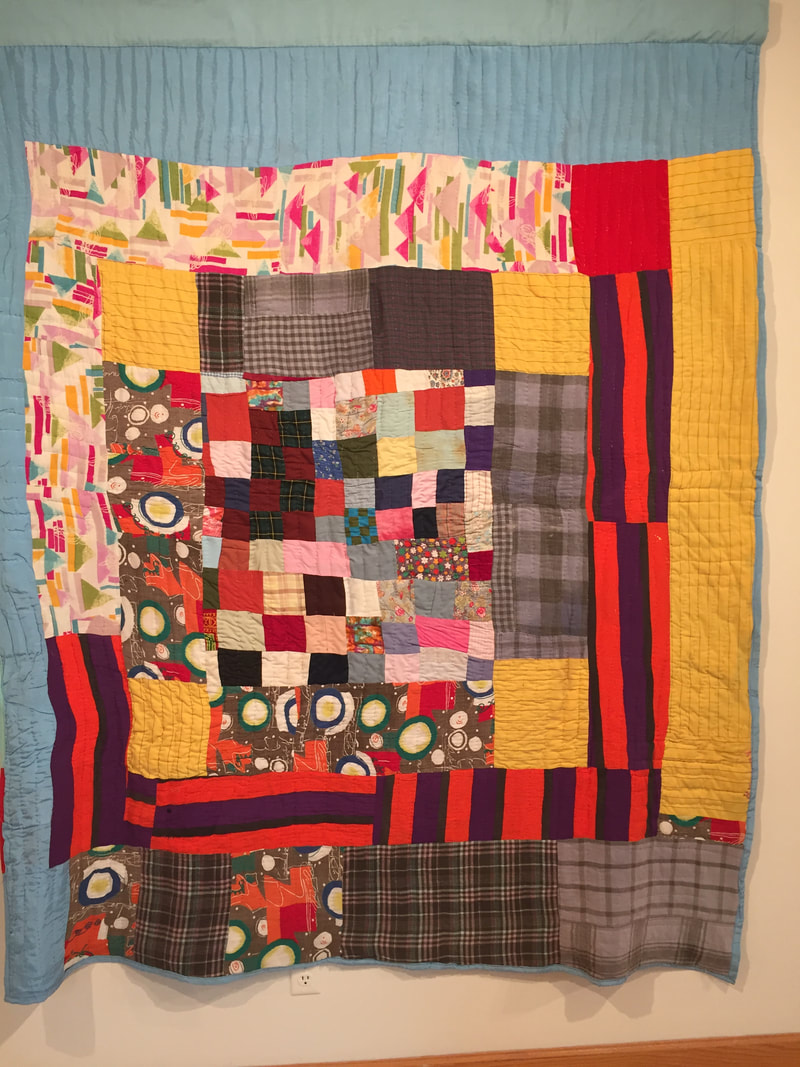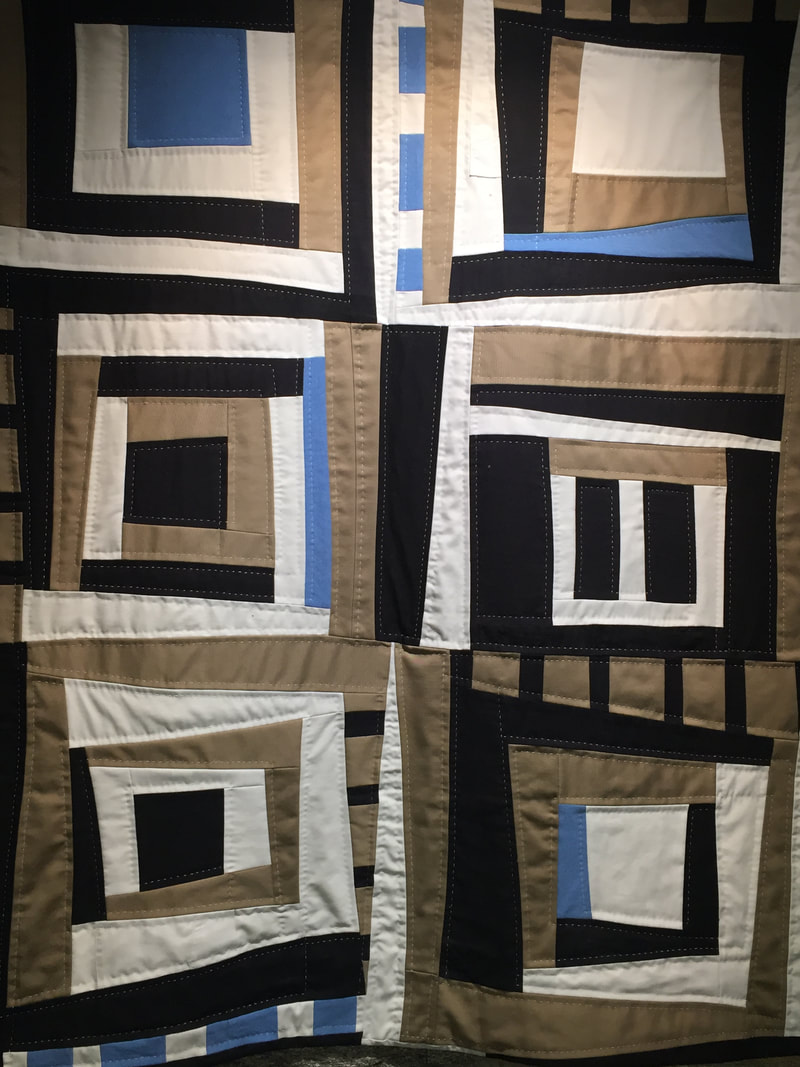|
I know that the BSO roaring 20’s music came out of left field for BRP readers. I have a feeling that your real question was “what the heck were you doing in Swarthmore? There’s absolutely nothing going on there” and you would generally be right. But we’re on the Swarthmore College listserve, and they have a number of cultural events that are interesting, and even better, they’re always FREE. We saw Ballet X there last year (I don’t care too much for classical ballet, but Ballet X was contemporary and really worth seeing), and this year there is an art show at the List Gallery that interested us. So there I was in Swarthmore and that’s when I stumbled on to BSO. Phew, that’s a lot of ‘splaining. Let’s get to the real reason for going to Swarthmore. Ready? There is an incredibly poor town in Alabama called Gee’s Bend. Most people living in that area are descendants of slaves who were owned by Joseph Gee. A few women in the town started quilting in the 1960s and 70s, not necessarily for artistic purposes, but for practical ones such as bed coverings, home insulation, warmth in the winter, etc. The quilters used whatever fabric they could get their hands on – sack cloth, old clothes – and then turned them into beautiful quilts. Now, these are not quilts of the Faith Ringgold variety. Those feature fantastical pictures, stories and messages. No, the Gee’s Bend quilts are geometric patterns or visually arresting designs. They first came to light when the Museum of Fine Arts in Houston displayed over 70 of the Gee’s Bend quilts. Since then, they have been displayed throughout the country. Swarthmore ended up getting a small show of the quilts of Mary Lee Bendolph, one of the original Gee’s Bend quilters, and has them displayed at the List Gallery through October. They also are displaying another quilt exhibition called Responses to Gee’s Bend, which feature works by 17 artists throughout the U.S. The “response” quilts are displayed across the quad in the McCabe Library. I don’t know if you’re the least bit interested in any of this. I thought the quilts were interesting as works of art in and of themselves, but also in that they help to tell a tale of America: dirt poor descendants of slaves coming out of the Jim Crow south and without any art training create visually compelling works of art that are really designed to be of practical use around the home. The works are so well done and so inspiring that they transcended their humble origins, and artists around the country honored the original works by creating other compelling quilts. There are many layers here, and I’m not doing a very good job of explaining them, but sometimes you just have to go see something with the most basic understanding of its heritage and then it means so much more. That’s the case with the Gee’s Bend quilts. If you go, don’t expect to be overwhelmed. The exhibition is small, and it doesn’t take long to go through it. Do expect to think about them a lot more after you leave and have time to dwell on what you experienced and how the quilts came about. I took some pictures, but they don’t do the display justice as the size, texture, and overall effect of each quilt is somewhat lost when simply looking at computer displays. The picture at the start of this article, and those that follow immediately below are of the Gee’s Bend quilts: Here are some pictures of the Responses to Gee’s Bend: Rock draws a boatload of its heritage from the south. So do the visual arts. Similar roots, different expressions. Ugh, that’s too cloying and clichéd even for me, the king of cloying and clichéd. Let’s move on. The world of rock ‘n roll is calling. Waiter! Something with a driving guitar lead, please!
0 Comments
Leave a Reply. |
AuthorMy name is Bill, and I live in the greater Philadelphia area. I love music, and I have a lot of opinions. This site is primarily focused on music, but sometimes I get off track. I hope you enjoy. Archives
November 2020
|
Photos from George M. Groutas, wonker, Me in ME, SchuminWeb













 RSS Feed
RSS Feed
